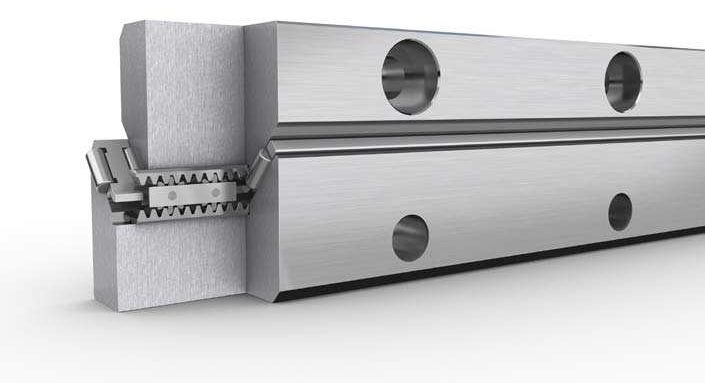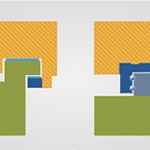← PREVIOUS PAGE || Because the cage floats between the guide assembly’s two bar guides, during operation it can drift from its correct (central) position … especially when operating on vertical axes or when the axis makes many short or partial strokes.

Vibrations and shock loading can also induce cage creep. A cage that’s misaligned from center effectively reduces stroke length so that the cage strikes end stops before the completion of a full stroke. That in turn forces the cage back to its centered position — potentially damaging the slide halves and inducing the very roller skidding or sliding the cage is supposed to prevent.

Anti-creep mechanisms include rack-and-pinion sets that integrate into the assembly or mount externally. Another solution to cage creep is to incorporate a studded center roller that engages indentations along the rail during each slide stroke.
One caveat here is that while many manufacturers’ crossed-roller slides are interchangeable (and can even replace ball-bearing slides without necessitating design changes) mechanisms to prevent cage creep can introduce slide dimensions that deviate from standard sizes.








Leave a Reply
You must be logged in to post a comment.